Red-eared sliders are one of the most common turtles in pet stores. If you ever bought or were gifted a red-eared slider, you know how wonderful it is to have them in your life. They are easy to care for and fun to engage with.
However, there are times when they suddenly refuse to eat their food. This lack of appetite can be frustrating and worrisome for the owner. When left untreated, the turtle’s lifespan and health are at risk.
If your red-eared slider is not eating, then read our guide to know the common causes and how to prevent them.
What Do Red-Eared Sliders Eat?
Red-eared sliders are omnivores, which means that they eat both animals and plants. They are foragers by nature, meaning that it is instinctive for them to search out food around the area where they live. In the wild, they eat small fish, insects, worms, snails, and aquatic plants.
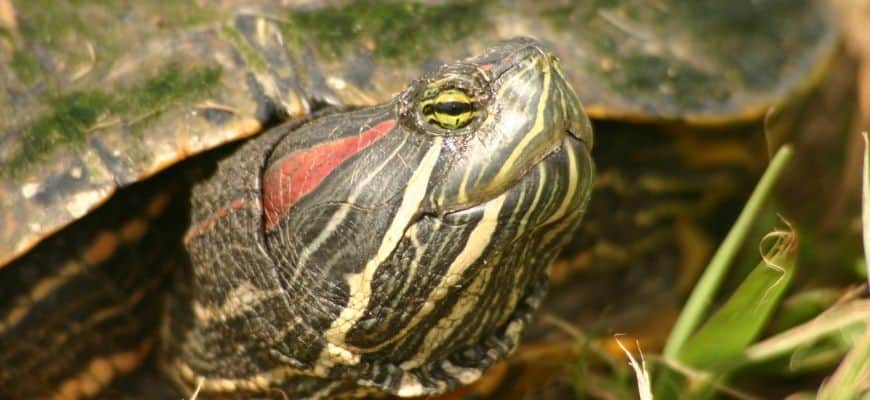
When they are in captivity, it is important for owners to provide them with a varied diet. This means that you should offer your red-eared slider different types of food, such as frozen nightmare snails, minnows, or worms. Because they also require plant and vegetable matter in their diets, you can also feed them things like fresh fruit and winter squash. They also love to eat aquatic plants, such as duckweed.
Of course, no list of red-eared slider foods would be complete without the mention of pellets. These are usually made up mostly of fish or shrimp meal, making them a great source of protein for your red-eared slider. They also contain calcium, vitamins, and minerals to help turtles maintain strong bones and shells. In general, pellets are the most convenient way to ensure that your turtle is getting all of these key nutrients.
Why Isn’t My Red-Eared Slider Eating?
As you could probably surmise, red-eared sliders are happy to eat all kinds of food. Unfortunately, they can also refuse food for lots of reasons. It is important to uncover the causes behind their lack of appetite and address them as quickly as possible.
Here are some possible causes:
Illness
One of the most common causes is illness. Red-eared slider turtles can suffer from a wide variety of diseases, which makes it important to get them checked by a veterinarian as soon as possible. Signs of illness include lethargy, swollen eyes or limbs, and not eating for over 24 hours. In severe cases of respiratory infections, they might also have trouble breathing or defecating.
Turtles can become sick due to a number of reasons. Exposure to pesticides and other chemicals, such as antifreeze, can be dangerous for your red-eared slider. They also lack the immune system that would protect them from parasitic infections and viruses. Finally, an unhealthy environment for turtles will often result in illness. Make sure to take note of the key symptoms of a sick turtle and act quickly.
So, if your pet turtle isn’t eating and has been sick, get them to a veterinarian as soon as possible. You don’t want to wait until they are severely ill to get them treatment.
Unfamiliar Environment
When turtles are introduced to new environments, their natural instincts kick in. This means that red-eared sliders may stay hidden or try to escape if they aren’t used to their surroundings. If you recently bought a new pet turtle, it might simply take time for them to get used to their new homes.
What constitutes an unfamiliar environment? Turtles are very sensitive to changes in their habitats, including the temperature, humidity, and placement of their basking area. Sometimes, turtles can even refuse to eat when they are transitioning between summer and winter habitats, or being fed in a different area of the tank. Turtles need time and familiarity before they start eating again, so be patient and only make changes that are necessary to their well-being.
The most important thing is to make sure that your red-eared slider doesn’t feel threatened in its environment. Keep their tanks clean and free of anything they could potentially harm themselves on, such as gravel or rocks. Don’t let other animals or pets near them without supervision. When turtles feel safe and secure, they are more likely to start eating again.
Temperature
Red-eared sliders can tolerate a very wide range of temperatures. However, that doesn’t mean that all water temperatures will be suitable for them to eat in. Red-eared sliders rely on their external environment to regulate their body temperature, so it is important for owners to keep an eye on the water temperature of their turtle tank. If it is too cold, they might stop eating out of frustration.
Generally speaking, red-eared sliders tend to be most comfortable around 72 degrees Fahrenheit, which makes it a good temperature for them at night. Their basking spots should also be around 88 degrees Fahrenheit, though they can eat at both lower and higher temperatures. If you want to make sure that your pet turtle is eating, try keeping a wider range of their basking spots warm enough for them to feel safe.
That being said, turtles should never be exposed to water temperatures below 60 degrees or above 86 degrees for more than four hours. These temperatures are especially dangerous for young turtles, who need more time to adapt to changes in their environment. If you think your turtle is not eating due to drop in water temperature, check the water heater and try raising the basking spot’s temperature by a few degrees.
Poor Water Quality
One of the biggest causes of turtles not eating is poor water quality. Red-eared sliders are aquatic animals, which means that they need clean water to survive. Even one day of exposure to polluted or dirty water can lead to disease and illness in your turtle, so frequent water changes are a must.
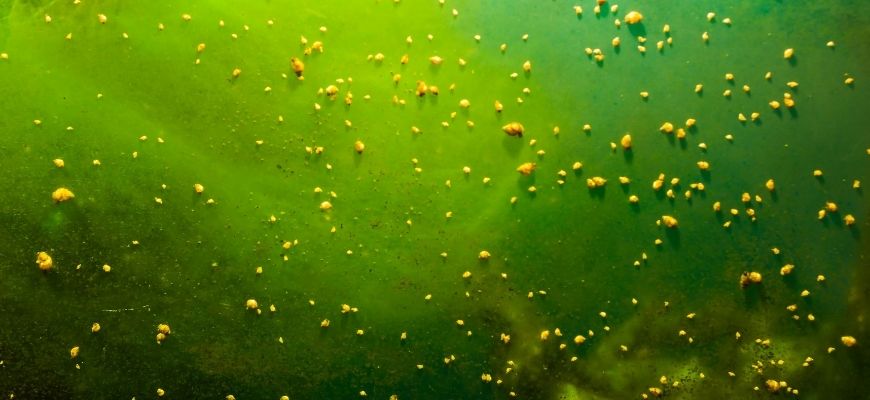
Water quality issues often lead to inflammation and infection in turtles. A turtle’s immune system is weak, so even a little bit of bacteria can travel to their respiratory system and cause them to stop eating. If you notice your pet turtle coughing or getting sick frequently, check the water for ammonia and nitrate levels. Invest in a filtration system or test your water regularly to make sure that the water in your turtle tank stays clean.
Another way to maintain clean water in your turtle tank is by ensuring that the filter is working correctly. Turtles are very messy creatures, so they produce a lot of waste which can build up in their tanks. If you aren’t using a filtration system, you should change the water at least once every four days to keep it clean. An unhealthy turtle is more likely to stop eating, so make sure the water in their tank has been cleaned before you try feeding them.
Chemical Exposure
If your turtle is not eating, you should always check to make sure that they haven’t been exposed to any chemicals or pesticides. If the water in their tank contains harsh chemicals like chlorine and fluoride, they might become stressed out. This can cause them to stop eating as a coping mechanism. Furthermore, if your turtle has accidentally ingested antifreeze (which is sweet-tasting), then they might get sick.
Many turtle owners inadvertently expose their pets to harsh chemicals by using household cleaning products in and around the turtle tank. To be safe, never use soap, detergent, or household cleaners in your turtle tank. Instead, use a 50/50 mix of water and vinegar to clean the inside of the tank. If you think your pet has been exposed to any type of chemical, consult a veterinarian immediately.
Another thing to note is that insecticides and pesticides often get sprayed onto food, which means that turtles can ingest them if they eat the wrong plants. To keep your turtle safe, make sure that any plants you put in their tank are free of pesticides and other harmful chemicals.
Overfeeding
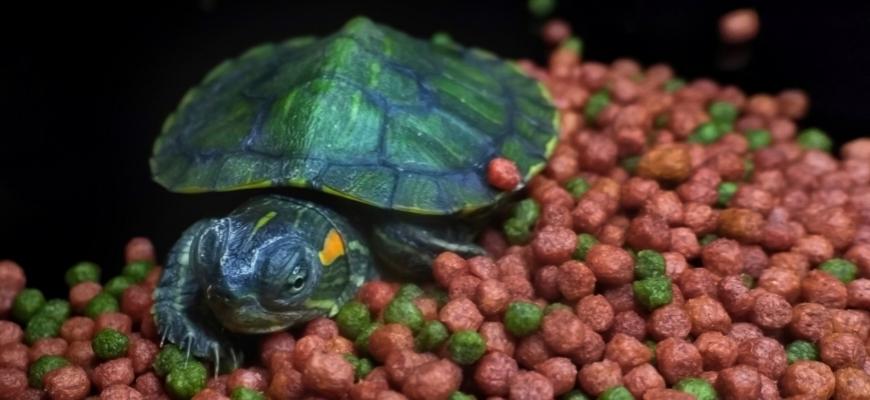
Turtles can develop health problems and become obese if you overfeed them. They only need to eat as much as they need to survive each day, which is often between six and ten percent of their body weight. If you’ve been overfeeding your turtles, they may have stopped eating because they are full. This is perfectly normal and natural, so there is no reason to worry.
Overfeeding typically leads to rapid growth and unnatural turtle behavior. If you keep your pet turtle in a small tank (less than 40 gallons) and feed him more than ten percent of his body weight each day, then he will grow too big for the tank. This can lead to health problems later on, so it is important to only feed your turtles as much as they need.
If your turtle isn’t eating, try reducing the amount of food that you give them each day. Not only will overfeeding cause your pets to lose their appetites, but it can also cause water quality to deteriorate. Excess food in water releases toxins as it rots, and can also cause filter blockage that harm your turtle. So, even if your pet was originally not eating for a harmless reason, the overfeeding might still cause problems after all.
Stress
Red-eared sliders are very sensitive animals who rely heavily on their instincts. For this reason, it is important to keep them in stress-free environments. However, turtles can become stressed out for many reasons. This triggers the red-eared slider’s “flight or fight response,” which means that they will try to either run away or hold their ground.
Some of the most common causes of stress in turtles include:
- Being housed with aggressive animals
- Not enough hiding places in the tank
- Unfamiliar environments or new decor in the tank
- People or pets moving too quickly around them
If you find that your red-eared slider is not eating, then you should always check for signs of stress. It might be a good idea to remove any new decor from the tank and place it somewhere else temporarily so that your pet turtle can get used to their new surroundings first.
Lack of Calcium
Can a lack of calcium lead to appetite loss in a turtle? Unfortunately, yes. There are many reasons why a red-eared slider might not be eating, and this includes health problems like calcium deficiency. Calcium is an important mineral for turtles that they need to maintain healthy bones and shells. If your turtle has a calcium deficiency, you might notice appetite decreases or that their shell has some fractures.
In the wild, red-eared sliders get calcium from eating an assortment of bugs and fish. If your turtle is not eating their normal supplements, such as crickets or worms, then they might be lacking calcium. With this in mind, make sure that you only feed your turtles fresh foods without pesticides to keep them healthy, fit, and strong. You can also opt for calcium supplements at your local pet store that you can add to their water.
Though this is rare, it is important to keep an eye out for calcium deficiency in red-eared sliders. When a turtle’s body lacks calcium, their appetite will decrease and they might refuse to eat. So if you have been using the same foods for a while without any change in your pet’s appetite, then try adding some calcium supplements to their water for a week or so.
Fixing The Problem
In most cases, a red-eared slider’s lack of appetite is caused by overfeeding. However, it may also be a sign of a health problem or a sign that they are not comfortable in their surroundings. Here are a few tips on how you can help your turtle get back to eating:
Introduce New Types of Food
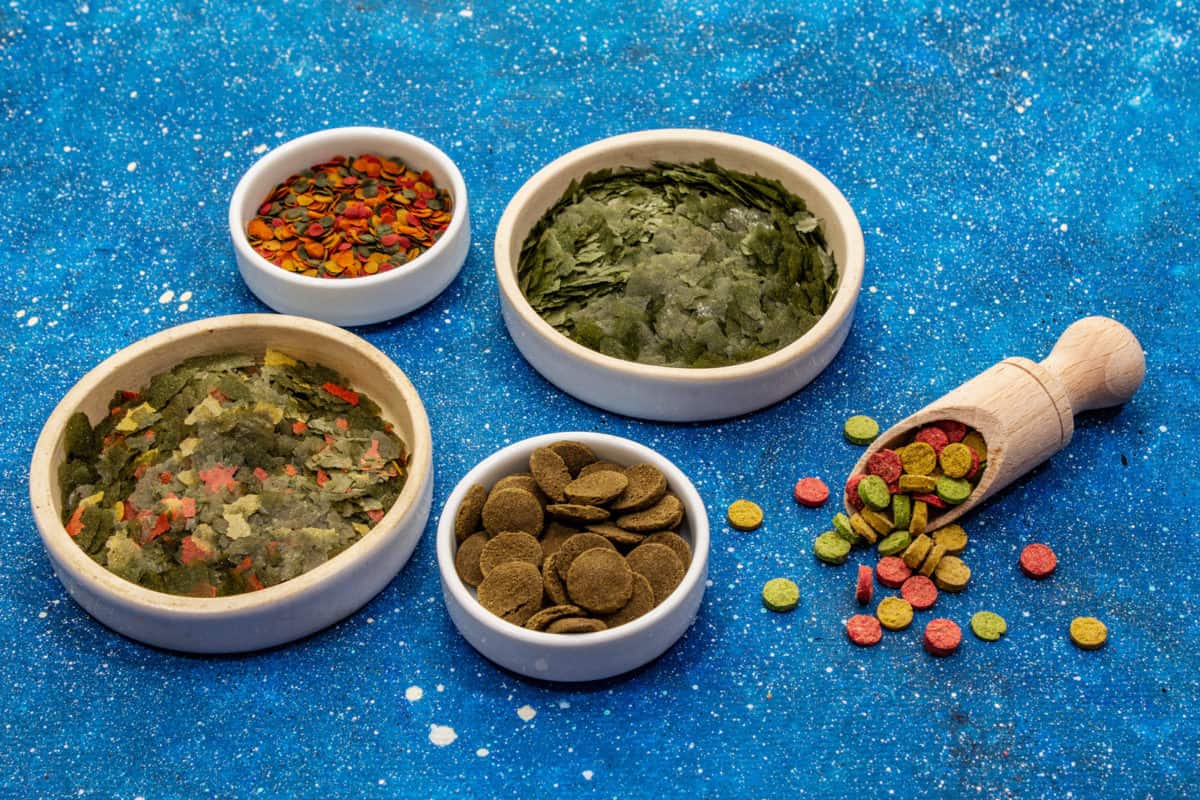
Sometimes, it is best to try giving your turtle a new sort of food rather than the same food that they have been eating. You can then observe how they react and if their lack of appetite continues. If you find a new kind of food that makes them more excited, then you can make this a part of their diet as well.
In general, fresh foods are a solid bet. This means that anything from veggie leaves to fruit seeds can be beneficial. Feeding your turtle a variety of foods encourages their appetite because it introduces a sense of novelty and appeals to their curious, intellectual minds while also supplying the nutrients they need.
As for your existing turtle pellets? The ones they refuse to eat? If you’re dealing with a picky, opinionated pet, you can try soaking pellets in tuna water for a bit before feeding them to your turtle. Some hobbyists also have luck soaking their pellets in fruit juice. Strange as this might sound, some turtles really do have a taste for sweet things, and it might be exactly what they need to become interested in their food again.
Use Artificial Lighting
For some turtles, it is beneficial to give them access to UVB lighting for a little bit of time every day. This encourages natural feeding instincts by simulating what turtles experience out in the wild. Animals without UVB lighting often find themselves lethargic and may even lose their appetite as a result.
If your turtle is losing weight because they are lethargic, then UV lights can definitely help you bring back their health and natural appetites. The amount of time they spend under the light should be between 10-12 hours per day to ensure that they get enough exposure. This method works for some turtles, so it is always worth a try.
Lighting requirements might vary between different species of turtle, so you should speak with a veterinarian to figure out the correct lighting for your pet. Otherwise, you might cause more harm than good.
Try Calcium Supplements
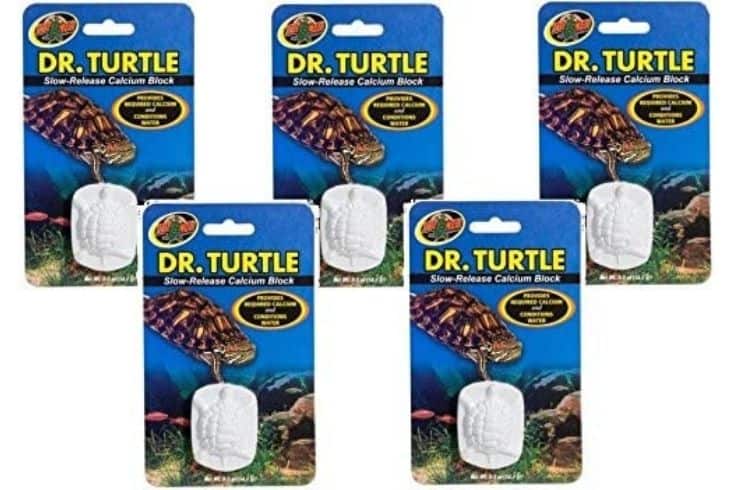
For some turtles, supplementing their food with calcium powder can help them regain their normal appetites. This is because a lack of appetite can sometimes occur when turtles are not receiving the most important minerals that their bodies need. Therefore, maintaining proper calcium levels is one of the most important steps to take when dealing with a picky turtle.
If you suspect that your pet may have a calcium deficiency, then it might help to boost their diet with calcium powder or even calcium blocks. Whether you choose to use calcium block or powder is up to you. Some hobbyists find that turtles refuse to eat calcium blocks while others think it does not make a difference either way. Calcium powders tend to be more cost-effective but require extra preparation.
Just like with any other supplement, this type of chemical should not be given to turtles without the supervision of an experienced hobbyist or veterinarian. The dosage will depend on how old your pet is and whether they are underweight normal weight or overweight. Ask a professional if you are unsure about what dosage to give your pet – the goal here is to make sure that they’re at peak, optimum health!
Create A Cleaner Environment
By now, it should go without saying that you need to be changing your turtle’s water on a regular basis. Turtles live in clean environments in the wild and spend much of their time swimming around. The water is also not stagnant like it can be in aquariums or vivariums.
A dirty environment (especially one that is humid) can lead to infections, parasites, and even respiratory problems which are all things that can cause appetite loss in turtles. Turtles need access to clean water so they can stay healthy and happy.
Aside from keeping an eye on the water conditions, you should also be regularly cleaning your pets’ vivarium or enclosure. This means removing any uneaten food, replacing old substrate with new layers, cleaning out water dishes, and checking the humidity levels throughout your pet’s home.
After all of this is done, you should place clean cuttings from leafy greens into the enclosure to provide them with a bit of extra cover. This might encourage them to spend more time in their surroundings – which is important for maintaining a healthy appetite.
Consult An Exotic Reptile Vet Specialist
If all of these solutions are exhausted, then it might be time to consult with a reptile veterinarian about your pet. This type of specialist is the best option for owners who are unfamiliar with their turtle’s normal behavior and overall health. Vets have dealt with turtles with a myriad of internal health issues and will be able to provide you with the best treatment based on their knowledge of animal health science.
At your visit, the doctor will want to examine your pet. They may take a blood sample, x-ray their joint, or even run some other type of diagnostic test depending on the exact situation. If they are able to pinpoint what is causing the appetite loss, then they will be able to provide treatment for this condition. Otherwise, they will be able to make recommendations on how to care for your turtle until their appetite returns.
And remember, always consult with the doctor before administering any type of treatment – even if you think it’s safe! It never hurts to ask an expert if you’re unsure about what to do when caring for a pet. Generally speaking, you should still give them vitamins, calcium supplements, and fresh foods as a preventative measure.
Conclusion
Turtles are unique pets that require a lot of care to stay healthy and happy. When their pet suffers from appetite loss, owners should do their best to find out what the problem is and provide them with the best treatment possible. We hope this article has been helpful and wish you the best of luck!
Do you know of any other reasons why a pet turtle’s appetite might get depressed? Please tell us about it in the comments section below! And if you know of any remedies that work well, then please feel free to share those with others as well. Do share this article with your family and friends so they can know what to do if their pet turtle doesn’t want to eat.
Check out our other articles for more information on how to take care of turtles!
